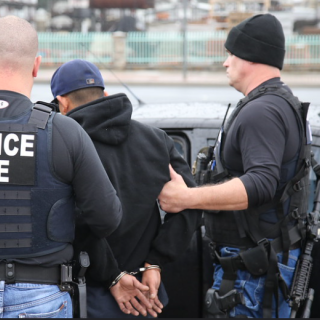Advertisement
Just days after the Columbus police pepper-sprayed hundreds of protesters near the Statehouse who were rallying against Trump’s executive order on immigration, two Street Medics led a Health and Safety Workshop for protesters in a packed room at the Free Press office. Interest was intense in the workshop, organized by Columbus Citizens for Police Review (CCPR). Many workshop participants had also participated in the protest. Below is a smattering of the wisdom from presenters Gabriel and Allison, who declined to have their last names used or to be photographed, since police have been known to target Street Medics.
Biggest Medical Issues.Over many years and many protests, Gabriel and Allison have found that the biggest medical issues are dehydration and sunstroke. Advice: Hydrate. Drink a lot of water beforehand, for days – hydrate well because cannot rehydrate quickly in the moment – no caffeine, no alcohol. You may need a liter of water per hour during a protest. Pepper spray and mace are exceedingly painful but rarely cause permanent harm (unless you are wearing contact lenses or have a medical condition such as asthma).
Preparing for Protest. Get a buddy or an affinity group. Get to know them, decide with them where in the protest do you want to be, whether your goal is to not get arrested or your goal is to get arrested, whether you will be carrying ID. Arrange communication, both with group and with protest organizers. If using cell phones, make sure everyone in the group has theirs turned on and know each other’s numbers – bring a battery pack to recharge and maybe bring a burner. Decide who will take care of stuff that needs to get taken care of – e.g., pets, kids.Have maps and locate hospitals, clinics, dead-end streets. One-way streets can be escape routes.
What to Wear, What to Bring. Wear non-fuzzy layers, pants with multiple pockets, rubber bands around ankles. Skirts maybe, with pants underneath best. Wear shoes you can run in, shoes that are not permeable. Sunscreen. Write legal support telephone numbers two places on your body, e.g., wrist, leg (if arrested, all papers will be taken away). Consider whether to bring ID, goggles or ear protection (to protect against sound weapons).
Water, water, water. Gorp, dried fruit. Medication – bring in prescription bottle with date – epipen.
Gloves, gloves, gloves: Disposable gloves rolled together in pairs in plastic bag and a plastic bag to put contaminated clothing in. If sprayed, get away from spray area, put on gloves, change clothes, putting sprayed clothes into a plastic bag.
What Not to Bring or Wear. Don’t wearcontact lenses, jewelry, or loose long hair. If menstruating, menstrual cup is better. Don’t bring pocket knife or anything that can be used as weapon, alcohol, valuables.
Logistical Considerations.Who monitors side streets? Riot cops may gather there. Pay attention to escape routes (keep track of one-way streets for escape). How do police maintain control? Fear: gunfire, chemical sprays, horses. So leave the area, walk, don’t run (or run carefully – don’t sprain your ankle).
Pepper Spray. Though it is painful and scary, the likelihood of permanent damage is very small. If spray gets in eyes, get away from the spray area, check if the person has contact lenses. If yes, then get them out, put on gloves then do an eye flush (but this is only good if done right) with water, slightly salinated is good, wearing gloves, using a spray bottle. The priority is to enable the person to see enough to get away.
Minimize the spread of unconfirmed attacks. If you didn’t see it, don’t share it.If sprayed, when you are home shower in cold to slightly warm water, starting with hair and going down to feet, everything.
Street Medic training. CCPR plans a Street Medic training – which will be a full three days – not yet scheduled.



